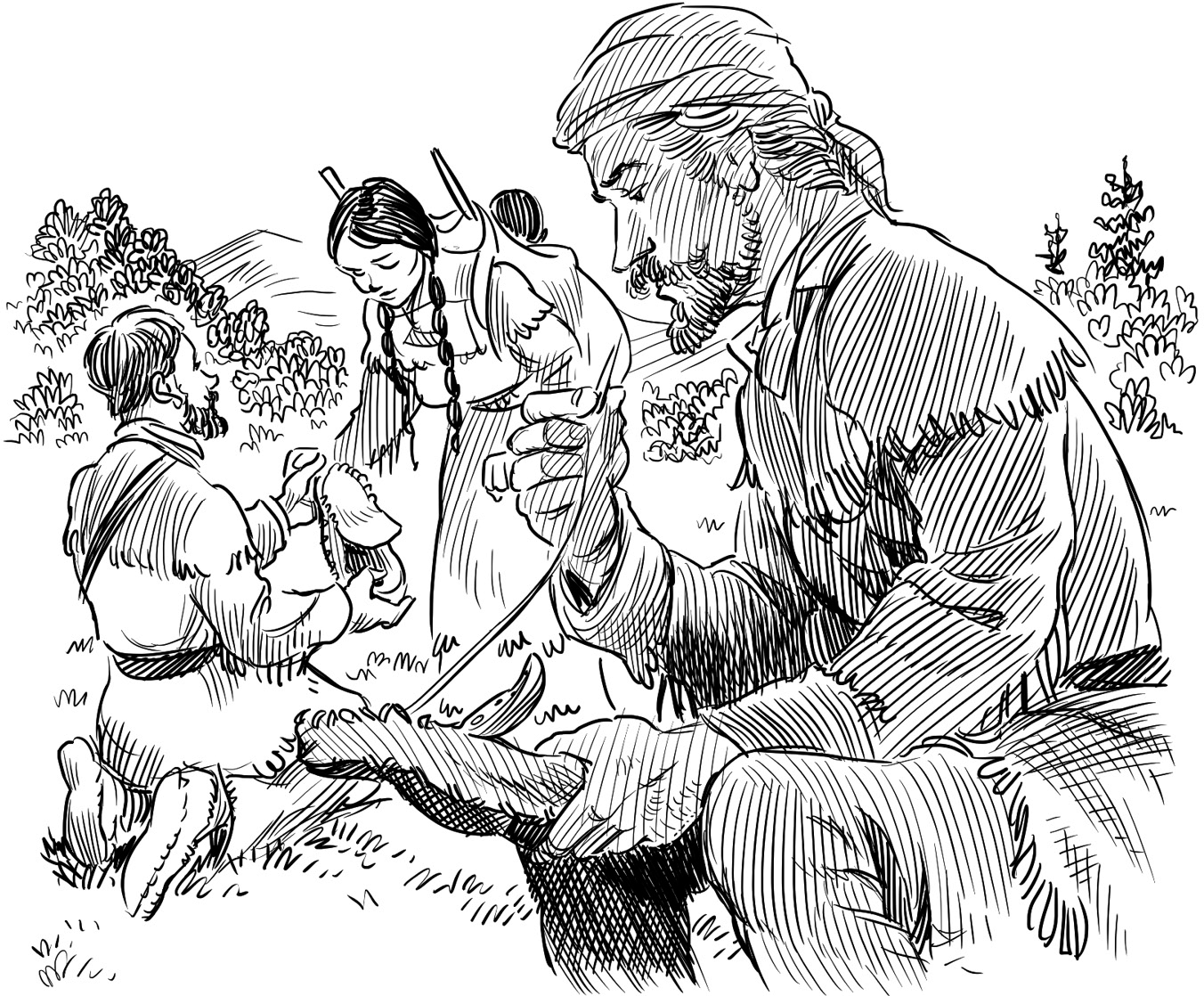CHAPTER 8
In and Out of Fort Clatsop
On December 7, 1805, Lewis and Clark had the men start building a fort where they could live for the winter. There was plenty of elk to hunt, and the nearby Clatsop Indians were willing to sell their food. In honor of their neighbors, Lewis and Clark called their new headquarters Fort Clatsop. It was constructed like all their forts, with logs stacked one above another, with separate huts and rooms as well as a parade ground and a storage area.


The 1805–1806 winter was long, boring, and rainy. Lewis wrote in his journal for hours every day. Clark spent his time drawing maps. The men didn’t have much to do except hunt and make clothing and moccasins out of elk hides. That winter they made three hundred pairs of moccasins. Why so many? They had learned the hard way that moccasins only lasted a few days.

Then one day something happened to break the boredom. A dead whale washed up some miles down the beach. Everyone wanted to see the huge creature, including Sacagawea. Lewis and Clark planned to collect whale blubber for eating, and whale oil for cooking. But the Clatsops claimed the whale was theirs. Lewis and Clark bargained with them. In exchange for the blubber and oil, they gave the Clatsops guns and ammunition.

Another break in the boredom came with the arrival of some Chinooks. Their chief was wearing a magnificent robe made of sea-otter skins. One look at the robe, and both Lewis and Clark wanted it. But the chief demanded blue beads in exchange for the robe. Blue beads were prized by the Indians, who called them “chief beads.” However, the explorers had already exchanged all their blue beads for food and horses. They had no blue beads left.
The Chinook chief refused to accept anything but blue beads until he saw the beautiful blue-beaded belt that Sacagawea was wearing. The chief pointed to Sacagawea and made it clear that he would trade his robe for the belt.


Sacagawea treasured her belt. But without saying a word, she unfastened the belt and handed it to the Chinook chief in exchange for his robe. Giving up a prized possession was her way of thanking Lewis and Clark. They had welcomed her on this trip. Clark had saved Pompy, her husband, and herself from drowning back at the Great Falls. Both men had seen her through her last terrible sickness.
The rest of the winter was dreary, wet, and tiring. Of the three months in Fort Clatsop, only twelve days were without rain. The men had reached the end of their journey. Now there was nothing to do but wait out the winter. Then they would begin the trip back east.